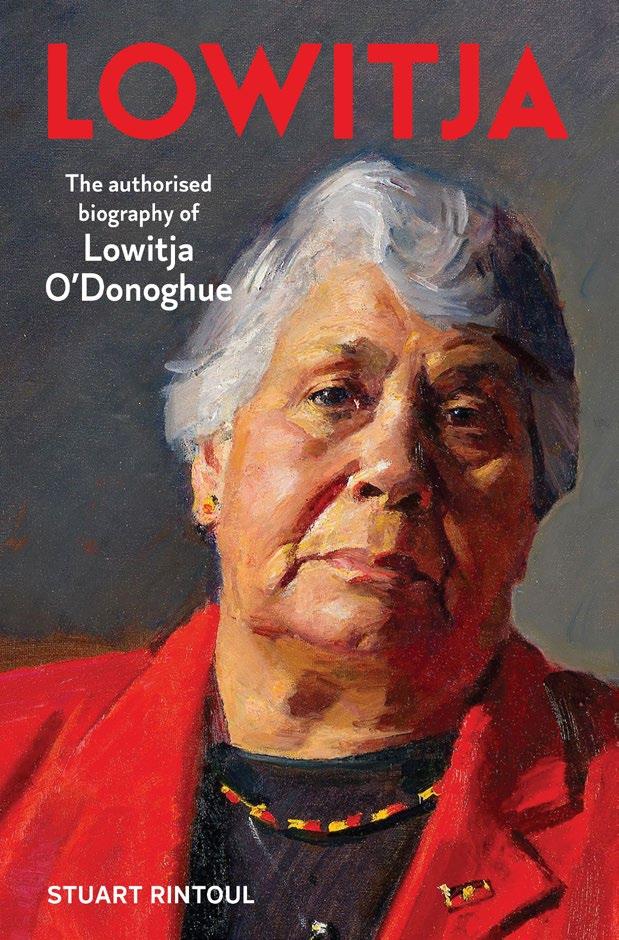
28 minute read
Honouring Aunty
Honouring
AUNTY
Advertisement

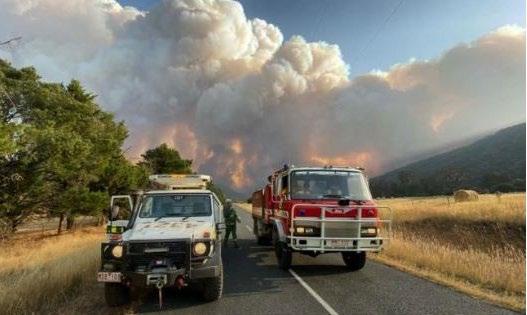
Emergency broadcasting
Australians turn to the ABC in times of crisis. The ABC’s national Emergency Broadcast team works closely with its 56 capital city stations and regional bureaus and emergency service organisations, to bring audiences rolling emergency coverage when needed. This is supported by the ABC’s recently updated Emergency website (abc. net.au/emergency) and localised social media posts. To ensure the ABC meets the high expectations of the community, it has further invested in its Emergency Broadcast team to ensure it has the capacity to broadcast up-to-date and accurate information to all Australians during an emergency, no matter where they live. The 2019/20 bushfire season involved the largest number of ABC staff ever to have worked on an emergency event. The number of emergency events covered by the ABC almost tripled from the previous year and emergency broadcast and news teams often worked around the clock to provide critical information and coverage to local communities. At the height of the bushfire crisis (31 December-14 January), ABC Sydney and ABC NSW local radio produced 296 hours of rolling/continuous fire coverage, ABC Gippsland 134 hours and ABC Melbourne 83 hours. Over that same period, the ABC undertook emergency broadcasting for more than 200 emergency events across the country. Independent research commissioned by the ABC showed that not only was the national broadcaster the most trusted information source at the time but lives were saved as a result of people acting on information the ABC provided. The ABC’s role in providing a rolling source of information was crucial in allowing people to be informed and aware of danger, to make plans and in evacuating. For many people, when digital and telecommunications failed in bushfire impacted areas, ABC Local Radio was the only way to access timely information and helped people survive. ABC teams also focused on supporting impacted communities as they recovered from the summer bushfires, sharing their stories of resilience and recovery. Local ABC teams have supported local fundraising events and the ABC also raised more than $13 million in partnership with the Red Cross and City of Sydney as part of its New Year’s Eve donation drive.
Arts
No media organisation does more than the ABC to promote and provide a forum for the arts and artists in Australia. More than three-quarters of Australians say the ABC encourages and promotes Australian performing arts, such as music and drama, in line with its governing charter. In 2020, the ABC increased its support for Australian artists and creatives to help them cope with the ongoing impacts of COVID-19. This support was highlighted by the ABC Arts Digital Fund for innovative new arts content and Australian Music Fund to support independent artists and musicians.
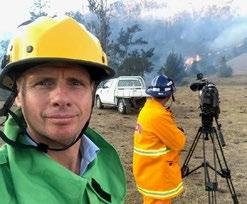
When you think of the history of Australia, you keep coming back to the involvement of the ABC, across all of their platforms. ‘Aunty’ has been the communicator and go-to for Australians since it was launched by-then Prime Minister Joseph Lyons in July, 1932.
Whether it’s Arts, Science, Sport, Politics, Education or updates on floods and bushfires, Australians have learned to rely on accurate and up-to-date information. Here, with the help of the ABC and Friends of the ABC, we have compiled a look at the work and history of our national broadcaster.


With the lights out in theatres and concert halls due to the pandemic, the ABC also launched its biggest-ever on-demand catalogue on iview of performances from Australian arts companies, across theatre, opera, ballet and classical music. The ABC’s unparalleled support for Australian arts and culture plays out across multiple platforms, including the national music networks of triple j, triple j Unearthed, Double J, ABC Classic, ABC Jazz and ABC Country – and Radio National programs such as The Stage Show, The Art Show, The Book Show, The Music Show, The Screen Show, The Bookshelf, Lost and Found, Blueprint, Stop Everything! and Indigenous program Awaye!. ABC Arts on television includes ABC News’ weekly arts, entertainment and culture program The Mix, plus popular ABC TV titles including Anh’s Brush With Fame, Rage and the Spicks and Specks specials, as well as coverage of live events such as New Year’s Eve, triple j’s One Night Stand and major Australian music and arts festivals. The ABC also works with Australian arts organisations and institutions to raise awareness about Australian artworks, performances and exhibitions, including recent partnerships with the Australian Chamber Orchestra and National Gallery of Australia.
Education
The ABC is a trusted source for Australian teachers and students seeking educational content mapped to the Australian national curriculum, delivering highquality content for use in classrooms and at home. The ABC Education online portal boasts more than 4000 free videos, interactive resources and games, across subjects such as English, maths, science, history, geography, media Literacy, financial literacy and the arts and technologies, including STEM. In response to the COVID-19 pandemic, the ABC expanded its schedule of free education content to support students, teachers and parents forced to learn at home. ABC Education worked with state and territory education departments and other education providers to deliver additional curriculum-linked content to children of all ages. This included additional education programming on the ABC ME TV channel, such as Behind The News, Ecomaths and Numberblocks. Working in partnership with the states and territories, ABC Education also created mini lessons presented by Australian schoolteachers, on specific learning areas from the English, Maths and Science curriculum. Pre-schoolers are also in safe hands with trusted content on ABC Kids, ABC Kids listen and the ABC Early Education website, which includes Reflective Journal blog posts for educators and shows and podcasts across the five curriculum areas of family, community and culture, sustainability and nature, creativity and self-expression, STEM and health and wellbeing. Other recent highlights include the ABC’s national Media Literacy Week, to help people of all ages navigate the modern media landscape. Such support includes video and interactive resources on media literacy, drawing on expertise from around the ABC, to assist teachers and students to understand misinformation, bias and the value of news. ABC Education also includes Learn English, the online portal for English language learners in Australia and overseas, which has the largest Facebook community in the ABC – with more than 5 million followers.
ABC FRIENDS NATIONAL
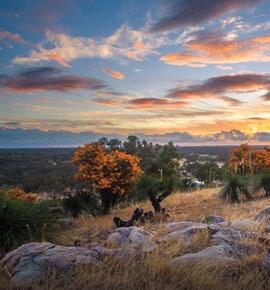

• ABC FRIENDS was first established as
Friends of the ABC in the 1980s and
State based groups have periodically rallied to protect the ABC from funding cuts and political interference. • Despite a pre-election promise .”No Cuts to the ABC”, the first
Abbott Budget of 2014 introduced serious funding reductions which have continued to impact on the national broadcaster for six years. • In 2015 a small group of ABC Friends from all states and territories began working to establish a national entity registered with the Australian Charities and
Not for Profit Commission to provide a focus for advocacy and communication to defend the ABC. • ABC Friends National has campaigned in
Parliament House, through local state branches and social media to alert the community to the ongoing risks to Australian public broadcasting. • All states have run targetted marginal seats strategies in the 2016 and 2019 Federal Elections as well as in several by-elections. • In July 2019 ABC Friends National established a comprehensive data base which has grown from 4,500 to 11,000 . During the last twelve months we have initiated three major campaigns, Defend Media Freedom, National
Emergency Broadcasting and Restoration of ABC Funding, • These campaigns have involved wide community participation and resulted in a public lecture in Parliament
House, submissions to parliamentary enquiries and to the Royal Commission into National Natural Disaster. • This years June 24 announcement of 250 staff retrenchments and cutbacks to services and programs is further evidence of the Federal Governments record of undermining both the funding and the independence of the ABC The ongoing 10% reduction in ABC funding since 2014 has resulted in a major loss of 1000 professional staff. • ABC Board Chair, Ita Buttrose has corrected government claims that ABC funding has increased every year. The Managing
Director David Anderson has clearly detailed the impact of ongoing funding reduction which means that the ABC receives half as much as it did in the mid 1990s …. now just 0.2% of the
Federal Budget compared with 0.4% nearly twenty years ago. • The recent release of the ABC Five Year Plan demonstrates that the public broadcaster is being forced to cut services and reduce Australian content and therefore risks full implementation of the ABC Charter • The recent October Budget did not contain any recognition of the ABC’s outstanding communication during bushfires and COVID 19 and projected funding in the Budget Papers show an ongoing decline. • In response ABC Friends has received overwhelming public support and is now planning its strategy for the months ahead. We will also continue focusing on regional and emergency broadcasting and the importance of the ABC in broadcasting internationally ,especially in our region. We anticipate participating in parliamentary reviews of funding and maintenance of quality broadcasting standards in a digital age . • ABC Friends National relies on its membership and supporters to fund the employment of a part time Social Media Administrator but all other work is contributed on a voluntary basis
Further detail about ABC Friends National can be found at www.abcfriends.org.au or by contacting the National President, Margaret Reynolds 0418181843.
The golden-orange blossoms of Nuytsia floribunda brighten the landscape around Christmas time in the south west of Western Australia. Known colloquially as the Western Australian Christmas Tree, the traditional owners of the region, the Noongar people, call it moojar or kaanya tree. This photo was taken in the Perth hills at sunset.
Nuytsia floribunda is one of the most ancient and the largest of the mistletoe family (Loranthaceae) and grows to look like a tree while drawing sustenance from the green plants around it, even sedges and grasses. Unlike its relatives, this hemiparasitic plant does not destroy its host.
ABC Friends is working hard for the restoration of appropriate funding to the ABC and to ensure it remains free from political and commercial influence.
ABC Friends is politically unaligned. We challenge governments of any political persuasion that attempt to dismantle or interfere with the ABC’s independence, or cut its funding.
JOIN abcfriends.org.au LIKE ABC Friends
FOLLOW @FriendsoftheABC
Season’s Greetings
ABOVE: ABC Friends National Promotional Items.
Science
ABC Science is an industry leader in highquality and trusted content across television, radio and digital services, supported by a team of specialist reporters and producers. ABC Science projects serve audiences by uncovering evidence and using it as the basis to test ideas, building scientific literacy among Australians. Leading the way in 2020 was the ABC podcast Coronacast, co-presented by Dr Norman Swan, which breaks down the latest news and research to help Australians understand how the world is living through a pandemic. Recent highlights include the award-winning television show The Great Australian Bee Challenge, which gave novice local beekeepers the chance to appreciate the latest scientific research on bee behaviour. Separately, Catalyst, the ABC’s flagship science television program, presented the special “Black Hole Hunters” program off the back of the world’s first photograph of a black hole. Science content on ABC Radio has also included Radio National’s science-meets-adventure series The Chase – Science on the Run, which brought a rich storytelling style to explaining new discoveries and scientific pursuits. Every August, the ABC celebrates National Science Week with a variety of content that celebrates science and technology for audiences of all ages. Such content is designed to encourage ABC audiences to take part in citizen science projects, which empower them to make positive environmental changes. As part of National Science Week in 2018, for example, the ABC launched the two-part Catalyst program “Feeding Australia” and the online citizen science collaboration Virtual Reef Diver, to enhance understanding of the pressures on the Great Barrier Reef. Each year, the ABC also offers media residencies to PhD-qualified early-career science researchers to enable some of Australia’s brightest minds to share their knowledge and expertise with the nation.
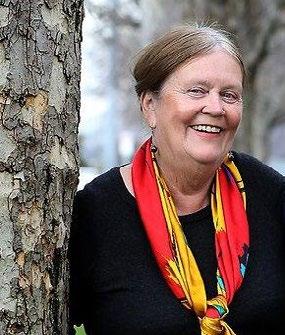

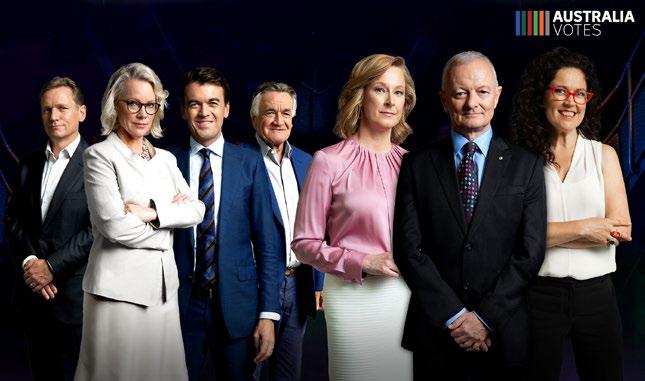

Radio National programs All in the Mind, Science Friction, Off Track, The Science Show, Ockham’s Razor, The Health Report and Future Tense cover topical science issues such as natural history, technology, climate and health. Beloved science communicator Dr Karl Kruszelnicki makes sense of science each week on radio station triple j, the longest running segment on the network, and brings audiences his unique podcast: Great Moments in Science.
Sport
The ABC is the home of sports stories, large and small, covering major sporting news and codes in Australia and around the world, from Grandstand on ABC Radio and digital to ABC TV’s Offsiders and sports analysis on ABC News online. ABC sports coverage includes broadcasts of the A-League, W-League, Socceroos and Matildas matches on ABC TV and iview and coverage of the cricket, AFL and NRL on ABC Radio, plus entertaining sports podcasts such as The Boot Room, Ladies who League, The Ticket and Bludging on the Blind Side with Roy and H.G. The ABC also prides itself on covering sporting events that are too often overlooked by commercial broadcasters. As the official broadcast partner of the 2018 Invictus Games – which celebrates the achievements of wounded, injured or sick armed services personnel and associated veterans – the ABC’s dedicated coverage of this extraordinary event reached 5.8 million Australians. The opening and closing ceremonies of the Games were broadcast across ABC Television, iview and Grandstand digital. The entertainment program Invictus Games Today was broadcast daily on prime-time television, keeping audiences up to date on the day’s events and achievements. The ABC’s comprehensive coverage was supplemented with news, documentaries and stories across social media, ABC Children’s programming and flagship programs such as Australian Story, Conversations, Catalyst and Gardening Australia. The ABC also has a strong track record of covering and promoting women’s sport, including broadcasts of the Australian Women’s Open Golf, the AFLW and NRL Women’s Premiership and Women’s Big Bash League. Wherever sport happens, the ABC is there – from coverage of regional Australian rugby league games on local radio to ABC Radio Australia’s recent three-year deal to broadcast coverage of the NRL men’s and women’s competitions to audiences in Papua New Guinea, TimorLeste and across the Pacific. The ABC’s expertise in sports broadcasting also helps train and mentor women journalists in the Indo-Pacific so they are given opportunities to cover major regional sporting events. Coverage in 2018-19 included the 2018 Commonwealth Games, 2019 Arafura Games and a podcast on female participation in the 2019 Pacific Games in Samoa.
News and Politics
ABC News is the nation’s most trusted news brand, offering news, information and analysis across an array of topics across multiple platforms, including ABC News websites, 24-hour radio and television networks and Radio Australia – a news and information service for the Pacific region. ABC News, Analysis & Investigations pursues issues and tells stories that speak directly to the concerns of all Australians, through high-quality, indepth journalism and comprehensive coverage of major events. ABC news and current affairs programs play a pivotal role in raising and investigating issues in the national interest. The national broadcaster is uniquely placed to deliver the latest political news to Australians with a team of national reporters working closely with those in the ABC’s Parliament House Bureau in Canberra. Australia’s best political minds are on the ABC, providing Australian audiences with balanced and trusted coverage of the political sphere, including policy analysis, explainers and state and federal election coverage. The ABC’s coverage speaks to Australians of all ages and backgrounds, from Afternoon Briefing, Q+A, The Party Room, The Drum, AM and Insiders through to triple j Hack, which focuses on the issues and concerns of younger Australians. ABC News also broadcasts live proceedings of the House of Representatives and the Senate from Federal Parliament, giving Australians the opportunity to obtain unique insights into the policy decisions and debates that affect us all. Australians turn to the ABC in increasing numbers for the nation’s best politics and news coverage. ABC News websites are the nation’s top digital news brands, as reported by Nielsen, with a unique monthly audience of more than 12 million. In 2019, ABC television coverage was the most watched on the federal election night, reaching 5.3 million Australians. Throughout the election campaign, ABC Local teams across the country hosted forums and candidates’ debates, ensuring audiences were able to ask questions directly of candidates and discuss their concerns. The ABC visited dozens of communities in every state and territory, producing more than 60 election-related outside broadcasts. The ABC Vote Compass survey tool, developed by political scientists, also explored how the views of citizens and candidates aligned. The ABC is dedicated to making every Australian part of the national conversation on major political and social issues. In 2019, the ABC launched the Australia Talks project, a landmark poll of 54,000 Australians about their lives, attitudes and experiences. The resulting Australia Talks National Survey provides an unprecedented insight into people’s everyday lives and life in Australia in the 21st century.

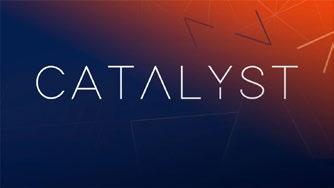
Featured in the upcoming Anzac Day 10th Anniversary edition of The Last Post Magazine, acclaimed photographer Tim Page speaks about his time in South East Asia and his friendship with legendary combat photographer Neil Davis.


South Vietnam, 1972. Australian cameraman Neil Davis taking a drink from a South Vietnamese soldiers helmet during the Communists’ Spring offensive in the Mekong Delta. Photo courtesy Australian War Memorial.
MARK JOHNSTON foreword
CHAIRMAN AND DIRECTOR OF THE AUSTRALIAN NATIONAL VETERANS ARTS MUSEUM
As the 1st Australian Imperial Force (AIF) sailed from Albany on 1 November 1914 a young soldier, Private Ellis Silas, took out his sketch book to draw the convoy of ships. Thus began a tradition of Arts engagement by countless current and ex-serving men and women (veterans) of Australia’s military that continues to this day. Veterans’ of all services, ranks and ages have engaged in the Arts to record their stories, as rehabilitation from mental and physical wounds, to form an identity, find purpose, build a community, share a common culture and pursue a career. Prisoners of war found the Arts to be vital to their survival while post service many veteran artists became household names as careers flourished. These veterans as performers, visual artists, writers and Arts patrons, together, have made an impact on Australia’s cultural identity that will resonate for generations to come. In 100 years, veterans have created a vibrant, constantly evolving and adapting veterans’ Arts community. With the vigour of youth, this community has a wisdom gained through the lived experience of war and service. With a collective pride in creative achievements veterans support each other toward personal goals while continuing the tradition forged by generations in veterans’ arts; a genre of art that has a special place in the Australian cultural context. To reinvigorate, facilitate and celebrate veteran’s Arts a new cultural institution dedicated to the veteran community was founded in 2013 with an emphasis on wellbeing through Arts engagement. The Australian National Veterans Arts Museum (ANVAM) was established with a vision for a home of veterans’ Arts in the disused former Repatriation Clinic in Melbourne’s Arts precinct, adjacent to Victoria Barracks and the Shrine of Remembrance. This place has a spirituality linked to veterans who served from the 1885 Sudan campaign to the Vietnam War and who sought relief from suffering in that place and that now offers the ideal location to celebrate veterans’ creative achievements. Since 2013 the veterans’ mental health budget has grown by over $63million p.a. suggesting current systems are failing and a new approach, with new investments, is long overdue. Demographer, Bernard Salt states, “What we need to be doing… is investing in arts and culture to help Australians be more creative, more connective, more caring”. Beyond Blue CEO, Georgie Harman emphasises, “We need to be investing in health institutions that don’t look like health institutions”. The Arts, and specifically facilitated Arts engagement, are uniquely preventative, while Arts therapies are complimentary to other interventions creating an impact that is difficult, if not impossible, to achieve via traditional means. Over coming years Arts and culture will be seen as an important, if not central, tenet in veteran’s wellbeing delivering cost-effective outcomes and benefits for all veterans over their lifetimes.
For more on ANVAM see www.anvam.org.au

March to Art: Place
An Exhibition of Veterans Arts Curated by Bruce Copland 6 April - 25 April 2021
No Vacancy Gallery 34-40 Jane Bell Lane (off Russell St) Level 3, QV Building Melbourne VIC
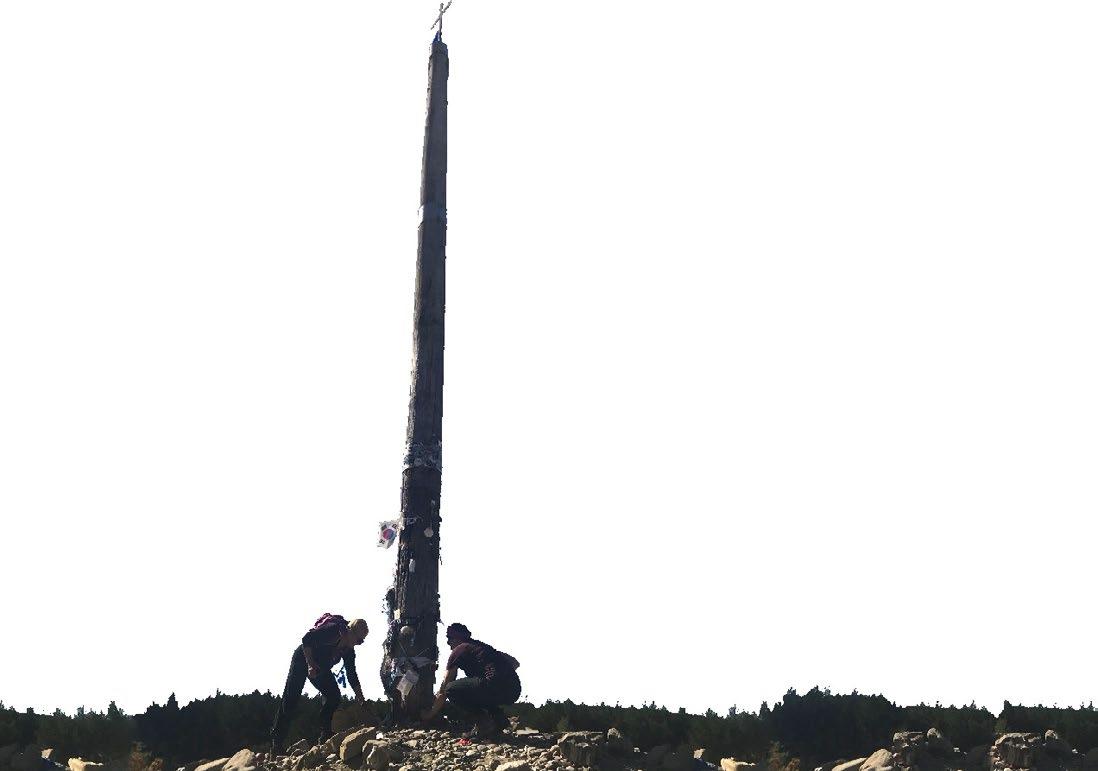
Wheelchair accessible
Mon - Wed / 10 - 4pm Thu - Fri / 11 - 5pm Sat - Sun / 1 - 4pm
Somewhere Lived encountered remembered Imagined
ANVAM’s 4th annual exhibition proudly supported by
Corporate Partner: Principal Sponsor:
Become a supporter today! www.anvam.org.au
@anvam310 #M2A21
Kathryn Rae, Cruz de Ferro, 2019 (edited digital photograph)
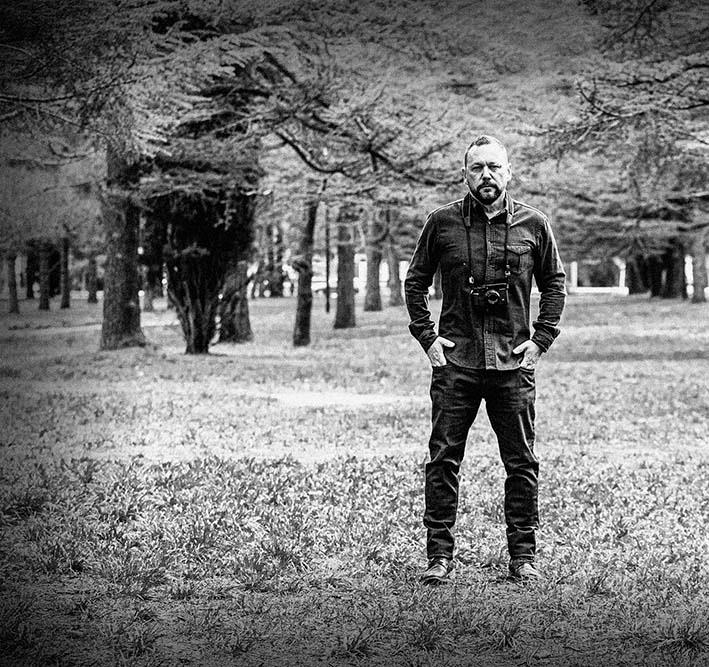
Persona
ABOVE: Kris Kerehona - An award winning photographer, Kris’ photography will feature in ANVAM’s upcoming March to Art: Place exhibition, 6-25 April 2021, at No Vacancy Gallery in Melbourne.
A creative collaboration between the Australian National Veterans Arts Museum (ANVAM), Melbourne-based portrait photographer, Michael Christofas, and Australian veteran artists, has been underway for the past four years.
The project is a photographic portrait series of veterans and family members who are artists; veteran artists. Conceived by ANVAM founder and Head of Arts Programs, Tanja Johnston, during ANVAM’s inaugural exhibition in 2017, March to Art: Identity, the project titled Persona captures veteran artists within the context of their space; a making space, a reflective space, a safe space. A chance meeting between Tanja and Michael during the 2017 March to Art exhibition led to the collaboration. Tanja says of Michael “he is an extremely warm person who brings a curiosity about veterans as artists, deep respect for their service and sacrifice, and his professional skills to the project that have allowed him to produce these stunning and insightful portraits.” Persona is now a national historical, commemorative and cultural project aimed to increase public awareness of the service and sacrifice of recent/contemporary service personnel and their families. The portrait series highlights the value those veteran artists featured have found in their engagement across the Arts. Tanja said

that “We are mindful to undertake and develop Persona respectfully while ensuring it is well researched and curated to showcase veteran artists while challenging perceptions of veterans as artists”. The project is defining a genre of art around service and the veteran community while contributing to our collective knowledge of service personnel post service representing veterans at a point in time. In capturing this record of contemporary veteran artists Persona is creating an important historical and commemorative record for future generations. Persona validates the experiences of service while celebrating those who are shaping the creative and cultural landscape of the nation, documenting and supporting notions of identity and transition in the growing Australian veteran arts community. Persona is grounded in relationships that reveal an alternative self, identity and truth. “What commenced as a personal curiosity about veteran artists has evolved into a cathartic experience for all involved.” Michael Christofas Over the course of 2021 ANVAM will be building Persona into a photographic exhibition, digital showcase and publication.
BELOW: Rory Cushnahan - Rory’s paintings have been exhibited in ANVAM’s annual March to Art exhibitions, Community 2018 and Narratives 2019. His work is currently being exhibited in the Changed Forever: Legacies of Conflict exhibition.

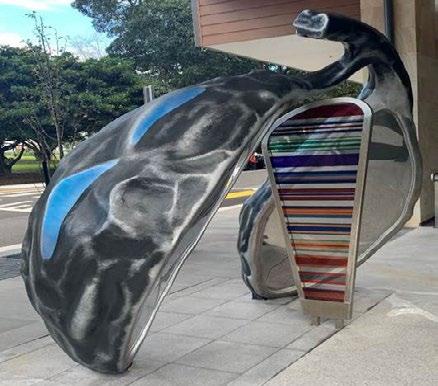
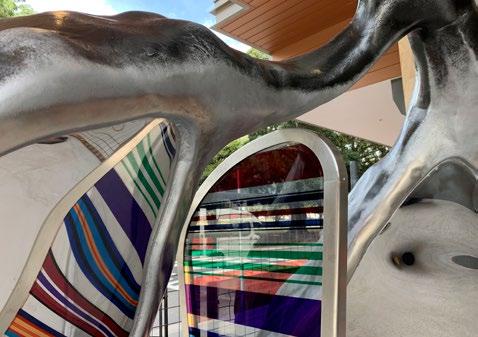
Spectacular artworks adorn free-spirited Newcastle RSL facility
Valour artwork draws on bushfire analogy to architecturally grace striking new RSL LifeCare Birdwood Park CBD development.
The Valour Sculpture, right, uses the analogy of the release of a seed from a woody pod after the stress of bushfire to symbolise bravery under the stresses of war. Celebrating valour as exemplified by Major Peter Badcoe, VC, the sculpture and artworks adorn the building’s frontage and side. A sculpture and artworks celebrating the transformational power of valour and patriotism has been unveiled at the new RSL LifeCare Birdwood Park facility in Newcastle. Its radiant themes emanate from the central works adorning the entrance to the building and extend to elegantly decorative car park screens where a walkway through to the main street is proposed. The work by internationally recognised Sydney Sculptor Vivienne Lowe was commissioned on behalf of RSL LifeCare by leading commercial builders Hansen Yuncken, as a permanently striking memorial to the bravery of service men and women in Vietnam, exemplified by Major Peter Badcoe VC. Designed by EYE Architects, RSL LifeCare Birdwood Park comprises of Long Tan Village and Badcoe House, a 4,900 sq m vertical aged care and retirement living facility located at 510 King Street in the Newcastle CBD. The development, the first vertical aged care and retirement living for Newcastle, includes 76 two-bedroom plus study independent living units and Badcoe House, a 60-bed residential aged care facility offering 24-hour care and incorporating the high quality and carefree environment contained in RSL LifeCare’s retirement facilities and nursing homes throughout NSW and the ACT. The central 2.5 metre high stainless steel and glass Valour sculpture and accompanying artworks are created from permanently beautiful materials with themes to create an enduring memorial intended to inspire the thousands who will pass by it over generations. Ms Lowe was recently recognised among international sculptors of note with the inclusion of her work in the book titled “50 Women Sculptors” – soon to be released globally. In addition to winning the RSL LifeCare commission for the sculpture and large screens, Ms Lowe won the 2019 Sculpture prize at the Ewart Art Prize Exhibition and has received numerous awards and commendations over the years. Her works feature in public and private spaces including commercial sites, council facilities, gardens and residences, coastal and TV media settings, with sculptures used in nationally televised entertainment programmes, including productions by Freemantle Media. The Pod screens viewed from the street, marking the front entry to the building. The screens are cast stainless steel bas reliefs, 3.5 wide x 2.7m high and 3.5 m wide x 1.3m high screen above the awning Ms Lowe says in creating the Birdwood Park Valour sculpture, she was inspired by the native Hakea seed, whose capsule is a craggy, woody and dense form which safeguards its seed. Like many native plants, it can take an extreme stress such as a bushfire for the seed pod to release the seed thus ensuring the plant species’ survival. “The Valour Sculpture uses the analogy of the seed pod and its release of the seed to symbolize bravery in our soldiers. The colours of Major Peter Badcoe’s medal ribbons are introduced in the form of the glass seed, to symbolise
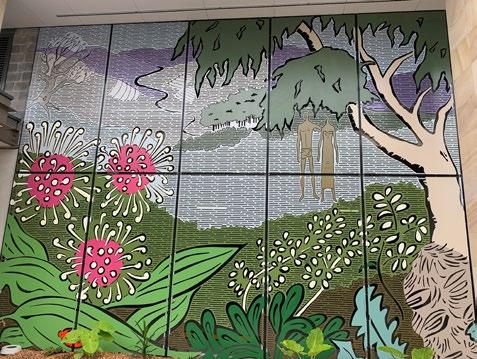


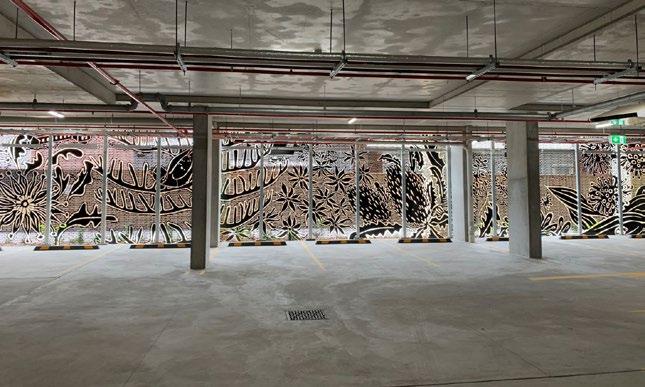
valour. It’s sometimes said that every now and again, people “show their true colours” and similarly, this rainbow of colours in the sculpture symbolises a valour; a valour which is inside us all, and which can sometimes be revealed by our soldiers in extreme times, such as in war. “Under circumstances where extremes warrant extraordinary behaviour, it can manifest as heroic actions, such as in Major Badcoe’s deeds in the Vietnam war. “The outer shell of the seed capsule sculpture is blackened as if in a bushfire, or “under fire” in our soldiers’ case.” “The metallic blue highlights give the work a more contemporary, less literal look, to show it is representational. The polished mirror finish steel on the inside of the seed capsule reflects the colours of the glass “seed” creating an ethereal image of “valour” onto its surface. It reflects the viewer’s image as well. In many respects, for most people, the comparison of one’s own bravery contrasting with the deeds of these servicemen, reminds us of how brave they were.”


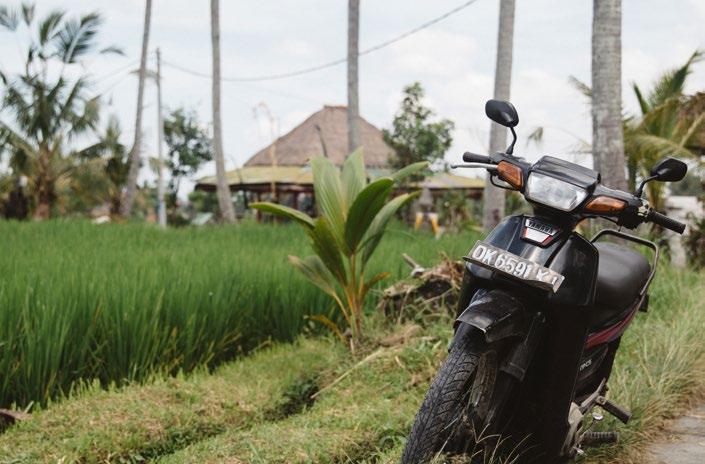
At the Circle K
I’m in good company at the Circle K –with my green pen, green bottle, watching tobacco slowly burn, understanding not a word of a dispute at the ATM. Eleven years since the bom – You’d think it was still sugartime on Bali, as backpacker eyes light up in the free Wi-Fi zone. There’s the clink of glass, smell of fried eggs, beers cracked open, coffee confabulations: temples, money, plantations, tourist merchandise, the question of thighs. A motorbike races the bulan –no need to hati-hati. And the beach will be back in the morning, along with incense and flowers. Is it still sugartime on Bali? An old blue t-shirt is rummaging in a rubbish bin –looking for God’s opinion. *Bahasa Indonesian: bom = bomb; bulan = moon; hati-hati = be careful JEREMY ROBERTS
For Being You On Market Street
He was walking back to the room he shared, a fair way from here. On the other side of the bay actually. He walked down Bay Tree Lane, kicking a can he had found outside The Walnut Tree. He exhaled. The condensation. He moved through the street as slow and as uncertain as the kiss he had shared with her the night before. The kisses. Containing a passion that ignited a promise of real ness. They had glanced at each other the night before in Market Street and looked at each other in an odd way, as if in silent agreement. In a moment her lips were against his. And they hovered, in shadows. Soundless but for the awkwardness of that kiss. Kisses. Under street lights he looked at her and appreciated her lack of makeup. And her lipstick. And her flatness. He looked at her and saw beauty. She leant in. They closed their eyes and in a whisper, she said “Thank you.” Yet, here he was, the following night alone, approaching his room on Chestnut Lane. “For what?”, he asked. “For being you.” GREG T ROSS

Living in a compartment of colours
I was at Joni Mitchell’s house and she was dancing with Jackson Browne and being cute and I looked at her skin and thought how it was a beautiful canopy for brilliance but that it looked like ordinary skin except for lesions and there were scars too and a tattoo that ran up the back of one leg, that had faded over the years. She spoke of an unrequited love as she looked at the moon. I was reminded of a lover who had given her heart too soon. I was at Joni Mitchell’s house and she was painting a window, with stockings on. She made a cup of tea. In the late afternoon she told me that marriage would stifle her and that she likes living alone as she offered me a cigarette. Joni Mitchell is a recluse. I was at Joni Mitchell’s house and saw paintings on the wall.She told me she was a lonely painter who lived in a compartment of colours. “Colour was my first love”, she said “then came flowers and music”. I was at Joni Mitchell’s house and her parents visited with crayons. Magenta and turquoise and silver and gold, She told me she was in the last days of autumn But that she didn’t feel like she was getting old. I was at Joni Mitchell’s house and, playing Rachmaninoff, she told me that his music spoke to her. She told me that people were shocked by her intimacy. She asked if I would still love her if I knew what she was really like and that she read books on spiritual development and that she was really Beethoven in drag. She told me she was a soul trying to find itself and that the only thing she wants from death is for it to be a long way off and that the start of River sounds like Jingle Bells. I was at Joni Mitchell’s house and she was dancing. GREG T ROSS


